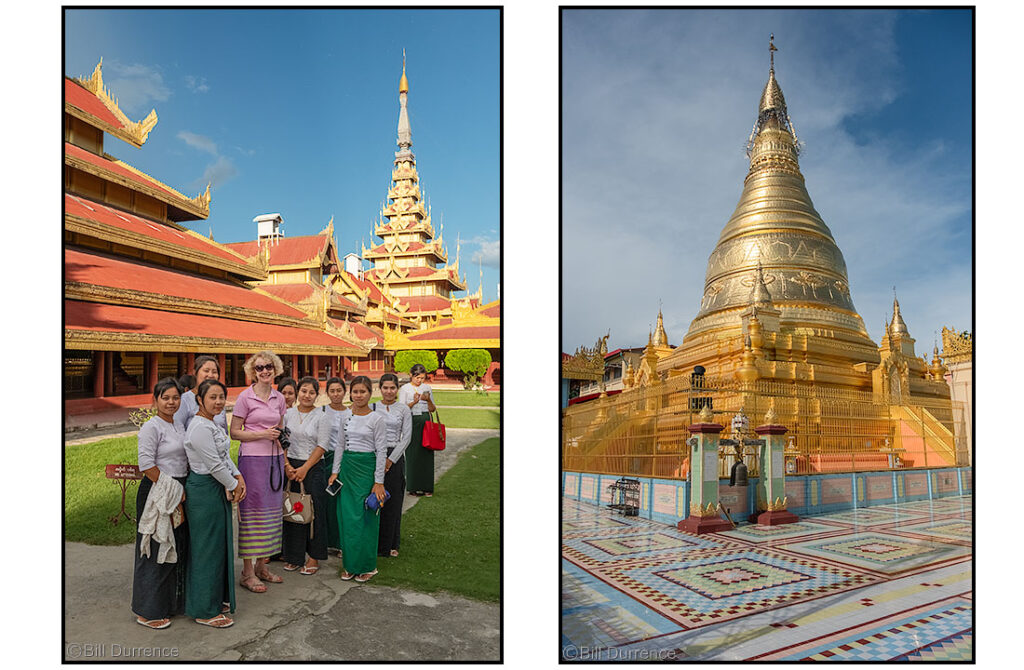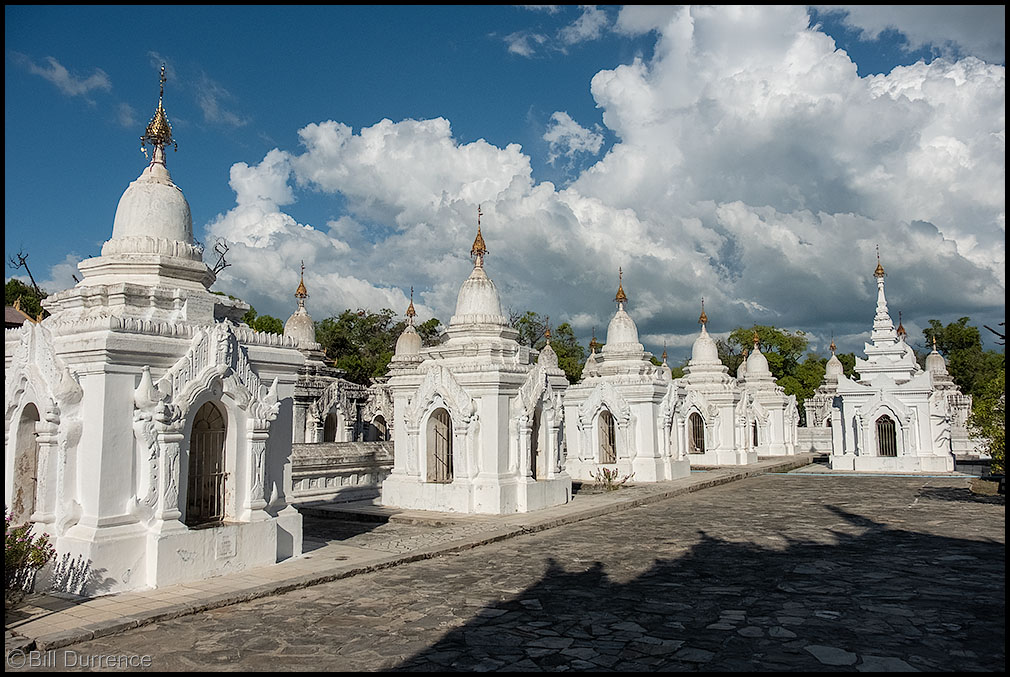Mandalay, Myanmar, 2017

I have been curious about Burma most of my life. Dad served in the China-Burma-India theater during WW II, and growing up I read the great, true, adventure stories of Chennault and his Flying Tigers, and of Merrill’s Marauders. I finally had the chance to see it when Barbara and I visited in 2017, as the Rohingya confrontations were becoming widely known. It didn’t fit with my understanding of Buddhists that they would be a faction in a civil war, but we were never in any area where conflict was happening. People seemed warm, friendly, welcoming, but no one would engage in a conversation about the issue.
Mandalay has been called the City of Gold, because of so many shining pagodas. It is one of only two places in the world making gold leaf. The other is in Holland where the process is machined, but in Myanmar it’s still done by men swinging a sledge hammer onto a small booklet of interleaved thin gold layers all day long. That could be an indicator for how un-modern much of Myanmar is, how extensive the earthquake damage will be, and how difficult the task to recover bodies and rebuild a country that already had limited infrastructure, and, likely, fluid building codes, not to mention an ongoing civil war, and a xenophobic military government.
Called the Soft Gold Pagoda, Mahamuni Pagoda’s face is washed daily and no gold is ever placed on it, but since the early 1900’s the statue has grown substantially from the constant application of gold leaf everywhere else, approximately 2 tons. Reports and photographs of the earthquake damage are limited for now and probably anytime soon, but one story I saw said 270 monks were assembled here at the time for some testing; now 80 are dead and 100 are missing, thought buried in the rubble. It’s bound to be much worse. The well-visited monument is only a few feet from an entrance to a large shopping mall, modern looking but almost certainly built in layers over a century of evolution.
On Sagaing Hill, overlooking the Irrawaddy River, Soon U Pon Shin Paya, with it’s Buddha Hall and gilded stupa, at the epicenter of the 7.7 magnitude quake, is closed. There are online photos of the decapitated stupa.

Barbara’s relative tallness and blonde hair attracts attention when we are traveling in Asia, and it’s not unusual for a woman, or group of women, to approach her for a photograph with her, as was the case here. If Barbara looks a little splotchy, it’s a local makeup custom that looks liked dried clay. The Palace area had substantial damage; the Clock Tower and Relic Tower are collapsed.

Near Mandalay Palace, Kutho Daw Pagoda, the “World’s Largest Book,” is 729 inscribed marble slabs, each in its own small stupa, presenting the entire 15 books of the Tripitaka, built between 1860 and 1868. You don’t have to know what that is (the teachings of Buddha) to appreciate the human achievement in building such an extensive monument. It is reported damaged.
Losing beautiful centuries old structures is a terrible thing, but the real tragedy is the thousands who will ultimately be destitute, injured, missing or dead.
For more of Bill’s photographs, go to https://www.billdurrence.com/index
